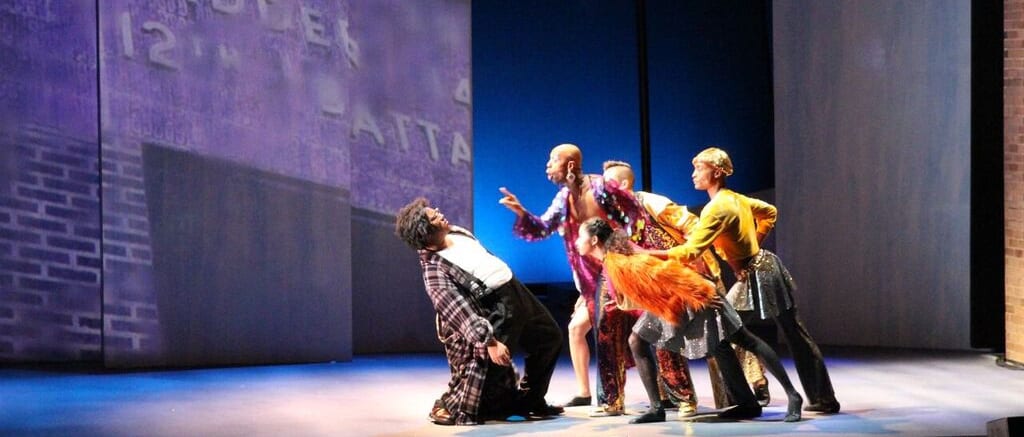Christmastime has come to Harlem in full swing, and it is a celebration to behold. The Classical Theater of Harlem’s production of A Christmas Carol in Harlem, adapted from the holiday classic by Charles Dickens, invites you to get in the Christmas spirit with feel-good moments, music, lights, caroling, and celebration galore. Shawn René Graham cleverly reworks the heartwarming A Christmas Carol, changing almost none of the essentials but presenting a nearly-new story that is modernized, individual, and distinct to Harlem.
We meet the familiar characters of Ebenezer Scrooge and Bob Cratchit, not on the streets of Victorian London, but in present-day Harlem. Scrooge (Anthony Vaughn Merchant) runs the “Your Home Can Be Here” Harlem real-estate company. He’s as mean and stingy (or, as he is later called by one of the Christmas spirits, “mingy”) as Dickens’ original Scrooge. But his miserly ways and obsession with his work are even more heartbreaking. His company thrives on the money they make by outpricing longtime tenants – usually families – and replacing them with renters. Those who can’t pay are forced to leave. Those who hang on include Bob Cratchit (Jeffrey Rashad), Scrooge’s long-suffering but good-natured employee-slash-nephew. Luckily for Bob Cratchit and the residents of Harlem, three Spirits are on their way to teach Scrooge the true meaning of Christmas.
If nothing else, this show is so much fun. There are dance numbers, party scenes, and songs. There are 21st-century references and Dickensian callbacks. But a series of effective upgrades to the original story peppered throughout make this a production worth seeing. The relationships are a little more nuanced, a little more personal. With Cratchit and Tiny Timothia (an adorable female upgrade on the original) as Scrooge’s family, his treatment of Bob as an employee and as a renter is even crueler, and it’s all the more poignant when Scrooge shows up reformed on Christmas Day. Scrooge’s relationship with the community is just as troublesome, and made all the more so by pitting Scrooge against fiery community organizer Sierra Jones (Alexandria Danielle King). But Scrooge’s powerful hatred of poverty, “free handouts,” and some shocking words lifted straight from the original Dickens send Sierra reluctantly away. It’s striking how easily this scene could be referring to 19th-century London or to the gentrification of Harlem.

And perhaps the best part is the incarnations of three Christmas spirits that visit Scrooge. They are visual delights that immediately bring out a reaction from the audience and captivate for each of their stints on stage. There is the Ghost of Christmas Past (Brandon Gregory), a slick-talking disco king who, astonishingly, plays his entire part on roller blades. The Ghost of Christmas Present (Jason C. Brown) is a sight to behold with a cut physique, a colorful gender-bending getup, an elegant entourage, and some of the best lines of the show, delivered at a mile a minute. (“Clock that tea, sis!” he snaps at an utterly bewildered Scrooge.) Christmas Present also has the impressive effect of swiveling his character so quickly between outrageously funny and truly ominous. Christmas Yet-to-Come (Kahlil X Daniel), despite the smallest time on stage and no lines whatsoever, made a striking impression in an afro-futuristic Grim Reaper ensemble. He pulled no punches in his lesson for Scrooge. I particularly enjoyed the visual of a black-robed choir of Christmas carolers swallowing Scrooge in their depths while the Christmas Future spirit conducts with most dramatic flourishing. Each spirit was perfectly cast and perfectly curated.
It’s a great gift to see a classic, beloved tale done well, and an even greater one to see it transformed in a way that finds more meaning for its audience. With intelligence and innovation, the Classical Theater of Harlem has done so for A Christmas Carol. The lighting, music, choreography, charismatic players, and clever adaptation come together to create a production that finds strength in the depth of talent that makes up the whole.

